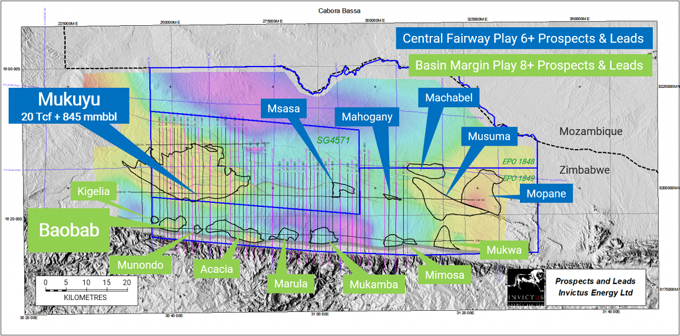- Fluorescence and elevated gas shows of up to 65 times above background levels in Upper Angwa primary target
- Elevated gas shows and resistivity in shallower Pebbly Arkose formation
- Working conventional hydrocarbon system confirmed in Cabora Bassa Basin
- Preparing to drill ahead to planned total depth of 3,500 mMD
Managing Director Scott Macmillan, commented:
“Early indications in our Upper Angwa primary target are highly encouraging and have proven a conventional working hydrocarbon system in the Cabora Bassa Basin, which is an exciting development validating our subsurface model.
“The presence of elevated mud gas readings, fluorescence in the cuttings, elevated LWD resistivity and increasing background gas with depth is a positive sign as we progress through the Upper Angwa Alternations Member.
“We still have several hundred metres of drilling through our primary targets with additional potential, which will be followed by a comprehensive wireline logging programme to evaluate results, with the aim of confirming the presence of moveable hydrocarbons in multiple zones.”
Progress and current operations
Since the last update, the 8½” hole section has been drilled to a depth of 3,086 metres Measured Depth (“mMD”).
Elevated mud gas peaks (up to 65 times above background gas baseline) have been observed while drilling through a depth of 3,070 mMD with marked increases from C1 to C5 compounds (methane, ethane, propane, butanes and pentanes).
An initial 100 per cent fluorescence was also observed in a downhole cuttings sample of sandstone, retrieved from a depth of approximately 3,070 mMD, indicating the presence of condensate or light oil when placed under an ultraviolet light.
Logging While Drilling (LWD) analysis has identified further shallower zones of interest within the Upper Angwa, with elevated mud gas readings and LWD resistivity being observed.
Additional potential zones of interest in the Pebbly Arkose and Forest formations also display elevated LWD resistivity.
However, due to multiple equipment failures of the gas chromatograph systems, mud gas composition data is not available at depths shallower than approximately 2,820 mMD through the Dande, Forest and majority of the Pebbly Arkose horizons.
Increasing background gas with heavier hydrocarbon components has been observed with the increase in depth since the repair of the mud gas chromatograph system.
All zones of interest will be comprehensively evaluated through a planned wireline logging programme, which will take place once Mukuyu-1 reaches total depth and will allow for the identification of any potential hydrocarbon pay.
Drilling progress towards total depth has been slower than anticipated due to challenging conditions in the Pebbly Arkose, where several loss zones were encountered, requiring remedial action to stabilise drilling fluid losses.
Drilling conditions subsequently improved in the Upper Angwa formation prior to the failure of the stator in the downhole drilling motor.
This has necessitated the changeout of the downhole drilling motor before drilling can continue through the Upper Angwa formation towards a planned total depth of approximately 3,500 mMD.

Forward plan
Following the change out of the downhole motor and drill bit, the Exalo 202 Rig will recommence drilling through the primary targets in the 600 and 650 horizons (Upper Angwa Alternations Member) reaching approximately 3,500 mMD.
A comprehensive wireline logging evaluation suite is planned to be acquired across the entire 8½” hole section to provide detailed geological information in order to confirm the presence of moveable hydrocarbons.
Mukuyu-1 remains on track to be delivered in the previously guided timeframe.
KeyFacts Energy: Invictus Energy Zimbabwe country profile
 KEYFACT Energy
KEYFACT Energy